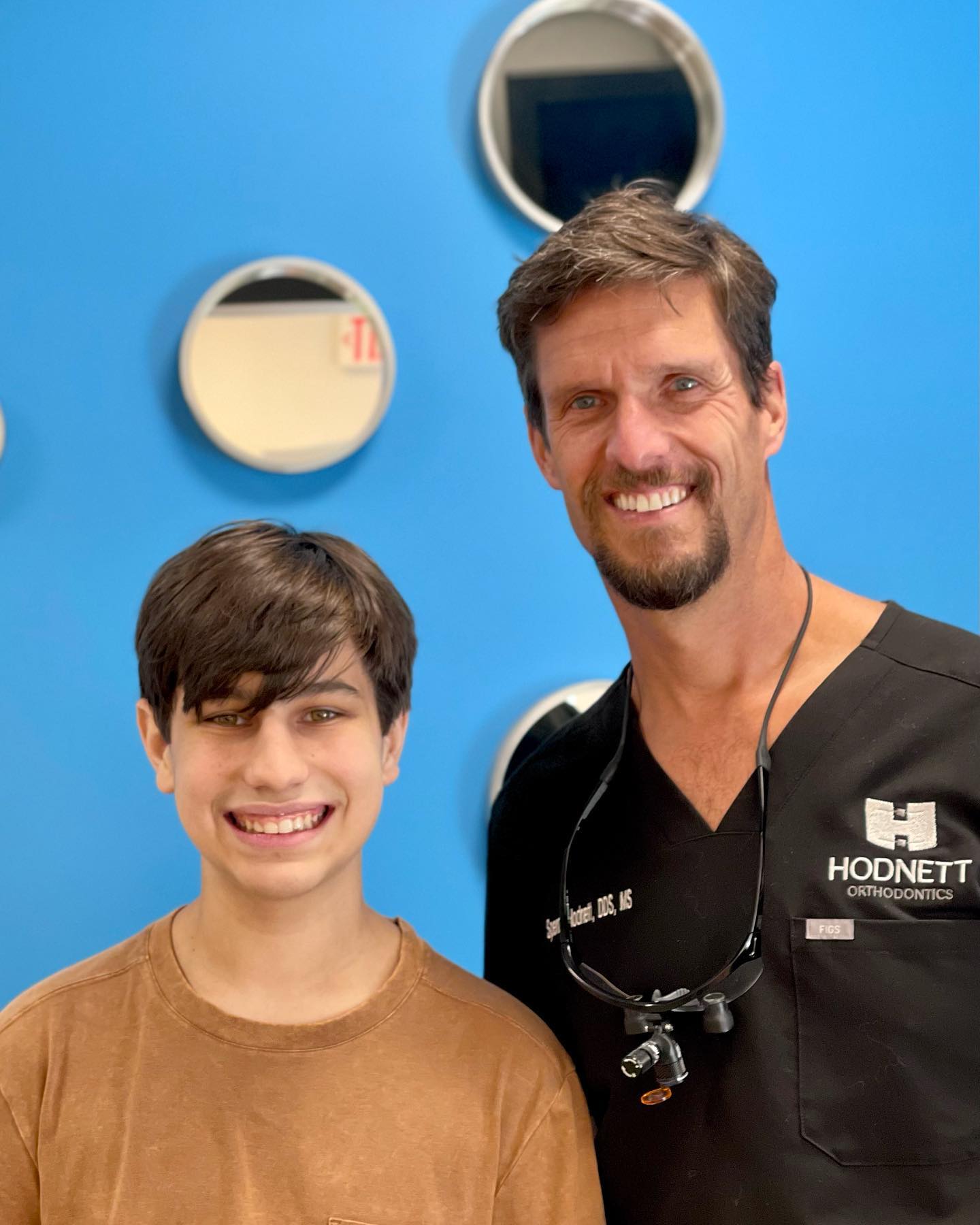What Is Early Orthodontic Treatment?
Two-phase orthodontic treatment is a unique process that combines tooth straightening with physical modifications to the face. Dr. Hodnett’s goal with early orthodontic treatment in Charlotte, NC, is to maximize your child’s chances of achieving the optimal healthy, functional, and beautiful result that will last throughout his or her life.
How To Tell If Your Child Needs Early Orthodontic Treatment
If you think your child might need early orthodontic treatment, it’s important to know the signs. Here are some common indicators that your child may require orthodontic care:
- Loss of baby teeth (can occur at any age)
- Chewing and/or biting difficulties
- Breathing through the mouth
- Persistent thumb-sucking after age five
- Early crowding of their front teeth (between the ages of seven and eight)
- Speech difficulties
- Shifting jaw when your child opens or closes his or her mouth (crossbites)
- Protruding teeth (top and bottom teeth extend away from each other)
- Teeth that do not come together normally, if at all.
Phase One
The goal of Phase One treatment is to help the jaw develop so that it can accommodate all permanent teeth while also optimizing the fit of the upper and lower jaws. As children grow and develop, they frequently exhibit early indicators of jaw anomalies, such as an upper jaw that grows too quickly or is too narrow.
If your child is over the age of six and has this jaw difference, they may be a candidate for early orthodontic treatment. Furthermore, if a youngster under the age of eight has crowded front teeth, early treatment can avoid the need for permanent tooth extraction later on.
Resting
The rest of the permanent teeth are left alone to come in during this stage of therapy. If any retention devices provide a danger of impeding eruption, they may not be suggested at this time. It is advisable to allow the permanent teeth that are already there to wiggle about a little. If the initial stage goes as planned, extra space would have been created for the permanent teeth to emerge.
Depending on the situation, it may be desirable to remove some of the primary (baby) teeth during this resting time to let the adult teeth come in. As a result, they must be called back for monitoring on a regular basis, usually every six months. As a result, regular follow-up consultations for observation are required, often every six months.
Phase Two
The second phase of Two-Phase Treatment is used to fine-tune and fix any problems that were not addressed or resolved during the first phase of orthodontic therapy. When these issues are totally corrected, the teeth will function properly together. In Phase Two, full upper and lower braces are frequently employed.
Typically, braces are utilized at this time to properly position each tooth and preserve optimal function. The length of braces treatment will vary based on the demands of the individual patient but is normally 12-24 months. Following the removal of braces, Dr. Hodnett will provide a retainer to keep each tooth in place!




